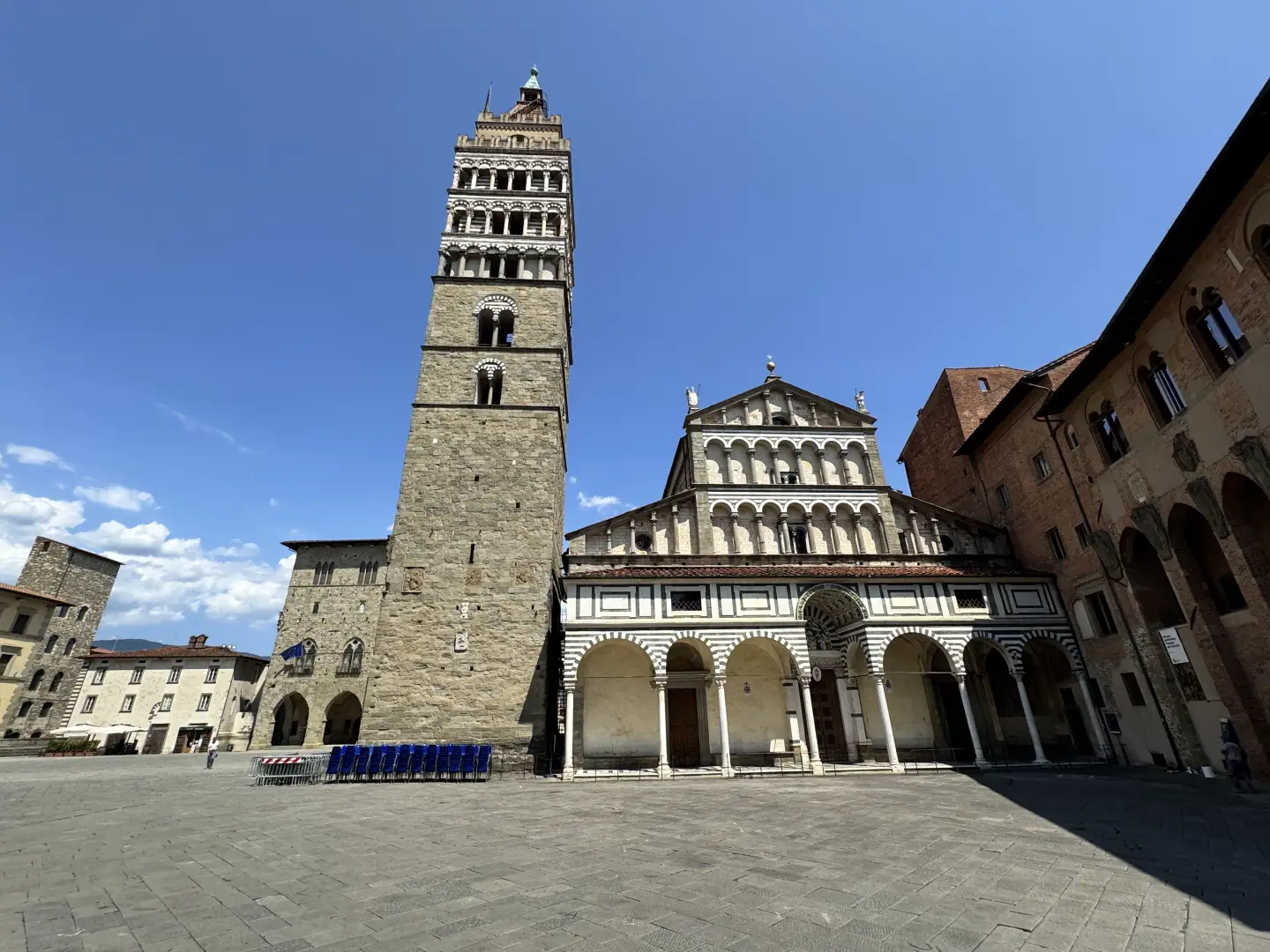Pistoia

Access
Pistoia is easily accessible thanks to its proximity to the A11 Firenze-Mare motorway, which connects the city to the main centres of Tuscany. The Pistoia railway station, located on the Florence-Lucca-Viareggio line, guarantees frequent connections with Florence and the Tyrrhenian coast. The reference airport is Florence-Peretola, located about 30 kilometres away.
Introduction
Pistoia is a Tuscan city located in the northern part of the region, a short distance from Florence, Prato and Lucca. It rises in a wide basin between the Arno plain and the first slopes of the Apennines, in a flat area but close to hills and mountains. The city has a millennial past, with Etruscan and Roman roots, and is known for its exceptional medieval and Renaissance artistic heritage. Italian Capital of Culture in 2017, Pistoia combines the charm of Tuscan cities of art with a more intimate and authentic lifestyle, preserving a human dimension and a strong bond with the territory.
Description
The territory of Pistoia stretches between the plains in the south and the hills and mountains in the north, culminating in the Tuscan-Emilian Apennines. The historical centre is about 67 metres above sea level, while the mountain hamlets rise above 1,000 metres, as in the case of Prataccio and the Monte Gomito area (1,894 m), in the Abetone district. The landscape thus varies from the agricultural plain crossed by the Ombrone stream, to the hills covered with olive and chestnut groves, to the beech forests and ski resorts of the Pistoia mountains.
Probably founded in Etruscan times and later developed as a Roman colony (Pistoria), the city experienced considerable development in the Middle Ages, when it became a free commune and then an important centre of trade and pilgrimages along the Cassia-Clodia and Francigena routes. Between the 12th and 14th centuries, the great civil and religious architectures that still today define the urban face of Pistoia were built: the Cathedral of San Zeno with its Romanesque bell tower, the Baptistery of San Giovanni in corte, the Church of Sant'Andrea with its pulpit by Giovanni Pisano, and the splendid Piazza del Duomo, considered among the most beautiful in Italy. From the Renaissance until the 19th century, the city remained active in the manufacturing and agricultural sectors, retaining a certain cultural autonomy with respect to Florence.
Today, Pistoia's economy is divided into several sectors: agriculture is still present, especially thanks to floriculture, of which Pistoia is one of the main European poles, with hundreds of companies specialising in the cultivation and marketing of ornamental and garden plants. The industrial sector is solid, with the presence of engineering and mechanical-textile companies, while the tertiary sector is concentrated above all in cultural, educational and tourism services. Tourism, although less massive than in other Tuscan cities, is growing thanks to a cultured and authentic proposal of art, festivals and nature trails.
The cultural scene in Pistoia is particularly lively. Every year, the city hosts popular events such as Pistoia Blues, a historic music festival that brings great international artists to the square, and Dialoghi sull'uomo, a review of anthropology and contemporary thought. There are numerous museums and art collections, including the Museo Civico, the Museo Marino Marini (dedicated to the great 20th-century sculptor originally from Pistoia), and the Spedale del Ceppo with its original glazed terracotta Robbia frieze. There is no shortage of traditional festivals, such as the Giostra dell'Orso, a medieval re-enactment held every year on 25 July in honour of San Jacopo, the city's patron saint.
The hilly and mountainous areas of Pistoia offer excellent hiking and tourist opportunities. The Pistoia mountains, with their forests, stone villages and marked trails, are ideal for trekking, mountain biking and winter sports, particularly in the towns of Abetone and Cutigliano. There are also numerous nature trails in the Park of the Tuscan-Emilian Apennines and in the Nature Reserves of Acquerino-Cantagallo and Padule di Fucecchio, which extend partly over the municipal territory.
Information
- Area: 236.32 km²
- Altitude: 67 m a.s.l. (city centre)
- Maximum elevation: 1,894 m - Monte Gomito
- Number of inhabitants: 89,923 as of 31.12.2024
- Name in dialect: Pistoja
- Inhabitants' name: Pistoiese
- Patron Saint: San Jacopo (25 July)
- Neighbouring municipalities: Agliana, Serravalle Pistoiese, Quarrata, San Marcello Piteglio, Marliana, Sambuca Pistoiese, Prato, Cantagallo, Montale
- Website: www.comune.pistoia.it